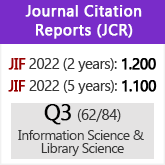The Cajal effect: bibliometric analysis of the Ramón y Cajal program at the University of Granada
DOI:
https://doi.org/10.3989/redc.2015.1.1127Keywords:
University of Granada, research, Ramón y Cajal Programme, bibliometric indicators, scientific policyAbstract
We analyze the contribution of the Ramón y Cajal Program to the scientific output of the University of Granada. We present the situation of Ramón y Cajal researchers at the University of Granada within the national context and analyze their output and impact according to the Web of Science. The results show that 79% of the Ramón y Cajal researchers obtained permanent positions at the University of Granada. Although representing only 4% of the research staff, they submitted 10% of papers. They produce an average of 2.29 articles per year compared with an average of 0.66 articles per year produced by the rest of the University’s PhD staff. Ramón y Cajal researchers publish in higher impact journals and have higher citation averages. Finally, we conclude thet fewer teaching responsibilities and the rigorous evaluation process of the Ramón y Cajal Program, are factors that determine the best performance of this reserch collective.
Downloads
References
Cañibano, C.; Otamendi, J; Andújar, I. (2008). Measuring and assessing researcher mobility from CV analysis: the case of the Ramón y Cajal programme in Spain. Research Evaluation, 17(1), 17–31. http://dx.doi.org/10.3152/095820208X292797
Cañibano, C.; Bozeman, B. (2009). Curriculum vitae method in science policy and research evaluation: the state-of-the-art. Research Evaluation, 18(2), 86–94. http://dx.doi.org/10.3152/095820209X441754
Camarasa, J. M. (2004). El programa Ramón y Cajal: resultats de les tres primeres convocatories (2001-2003) a Catalunya. Coneixement i Societa (06), 28–61.
Editorial Nature Medicine (2006). Growing pain. Nature Medicine. 12 (10), 1101. http://dx.doi.org/10.1038/nm1006-1101 PMid:17024189
Mandavilli, A. (2006). Spains ill-conceived project leaves its scientists in the lurch. Nature Medicine, 12(10), 1106. http://dx.doi.org/10.1038/nm1006-1106 PMid:17024193
Ministerio de Ciencia e Innovación (2011). 10 a-os del Programa Ramón y Cajal. Informe de resultados. Dirección General de Investigación y Gestión del Plan Nacional de I+D+i, Secretaría de Estado e Investigación, Ministerio de Ciencia e Innovación.
Sanz Menéndez, L. (2003). Coping with researchers labour market problems through public policy: The Spanish Ramón y Cajal Program. Unidad de Políticas Comparadas (CSIC), Working Paper 03-15.
Published
How to Cite
Issue
Section
License
Copyright (c) 2015 Consejo Superior de Investigaciones Científicas (CSIC)

This work is licensed under a Creative Commons Attribution 4.0 International License.
© CSIC. Manuscripts published in both the printed and online versions of this Journal are the property of Consejo Superior de Investigaciones Científicas, and quoting this source is a requirement for any partial or full reproduction.All contents of this electronic edition, except where otherwise noted, are distributed under a “Creative Commons Attribution 4.0 International” (CC BY 4.0) License. You may read here the basic information and the legal text of the license. The indication of the CC BY 4.0 License must be expressly stated in this way when necessary.
Self-archiving in repositories, personal webpages or similar, of any version other than the published by the Editor, is not allowed.

















